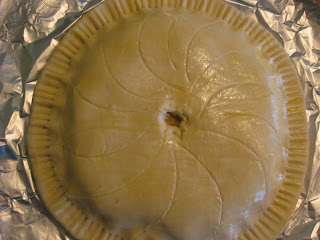When my husband and I went to Paris (while we were still dating), we went to an old-fashioned little neighborhood restaurant that we had found. I don't remember how we found it, but we had heard that the former prime minister liked the place and we wanted to check it out.
Since we were in the neighborhood, and it was a weekday and we were early (and presentable) for dinner, I figured we could swing by and see if it was busy. If not, we'd drop in. If it was packed, we'd just call the next day for a table.
Only one of maybe a dozen small tables was occupied, so I asked the host about dinner. "Non, non, non! We have no table for you. You must have a reservation," the older man responded in French, looking at us as though we had tried to crash a royal wedding. My husband and I looked at each other, then over the man's shoulders at one couple and nearly a dozen empty tables.
In New York, we might have walked out and kept going. But it occurred to me that maybe walking in off the street wasn't something a diner did at an old neighborhood restaurant here. When in Rome ... er, Paris ...
I asked the host for the telephone number, he gave us a card, and we went for a little walk. In less than five minutes we found a public telephone, made the call to find out when we could make a reservation and found out that we could come for dinner in 15 minutes, OF COURSE.
Back at the restaurant the man greeted us as though we were regulars. "Come, come," he said with a smile, seating us, then bringing a small glass of white wine to each of us. In other words, we had learned our manners. I guess at sit-down restaurants in Paris, they don't want some tourist to walk in as if the place were some lowly McDonald's.
And when the host presented us with an appetizer of braised leeks, I also learned that the mild member of the onion family was worth it's own dish.
I didn't have the presence of mind to ask for a recipe for the leeks (what with the free flow of wine and other things), but they weren't too hard to figure out.
Braised Leeks With Lemon Vinaigrette
Serves 4 as an appetizer
INGREDIENTS
4 leeks
1 cup chicken or vegetable stock (or 3/4 cup stock plus 1/4 cup dry white wine)
1 teaspoon mustard
2 Tablespoons lemon juice
4 Tablespoons olive oil
1 teaspoon chopped fresh thyme
salt and freshly ground black or white pepper
DIRECTIONS
 1. Clean the leeks. Start with a rinse under running water to remove dirt from the roots (but don't cut off the roots) and strip off the outer layer. Then cut off the tops (dark green parts) that are too ratty to be used for anything at all.
1. Clean the leeks. Start with a rinse under running water to remove dirt from the roots (but don't cut off the roots) and strip off the outer layer. Then cut off the tops (dark green parts) that are too ratty to be used for anything at all. Keeping the root end intact, slice the leek in half lengthwise, starting about half an inch from the roots going toward the top. Under running water, gently separate leaves just enough to rinse out the dirt and grit. When the leek is clean, trim the rest of the tops and save them for making stock. Sometimes the inner leaves higher up are lighter green and more tender.
Keeping the root end intact, slice the leek in half lengthwise, starting about half an inch from the roots going toward the top. Under running water, gently separate leaves just enough to rinse out the dirt and grit. When the leek is clean, trim the rest of the tops and save them for making stock. Sometimes the inner leaves higher up are lighter green and more tender.  Those can be chopped and saved for cooking fish. (I keep my chopped leeks in little plastic bags in the freezer.)
Those can be chopped and saved for cooking fish. (I keep my chopped leeks in little plastic bags in the freezer.)Finally, trim the root end before putting the leeks into a medium pot (about 1 1/2 quarts to 2 quarts) together with 1 cup of chicken or vegetable stock.
2. Bring stock with leeks to boil, then reduce to simmer and cover. Simmer about 20-30 minutes, or until leeks are very tender, and remove from heat.
3. In a glass measuring cup or small bowl, whisk together mustard and lemon juice. Gradually add olive oil while continuing to whisk, then add thyme and a pinch of salt and pepper. Taste and add more salt if desired.
4. When ready to serve, place each leek on a small plate and spoon vinaigrette over the top.
This is a good appetizer or side dish with chicken, fish or egg dishes, such as quiche. It's also good as a snack with fresh baguette and a glass of white wine.
NOTE: Instead of making a lemon vinaigrette, you could reduce the stock, add a bit of butter and seasoning to finish the sauce and pour that over the leeks.













